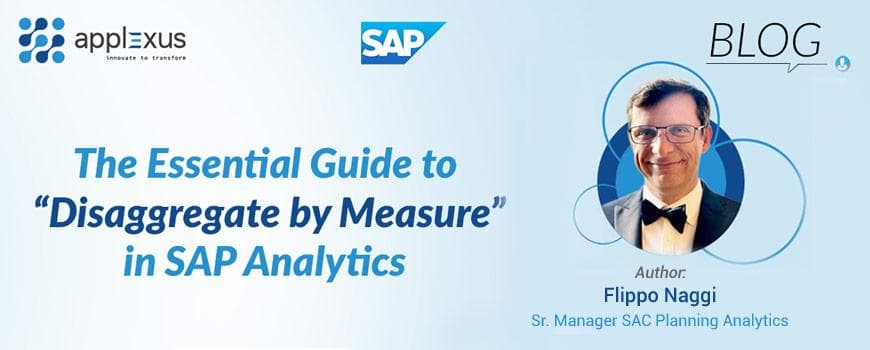Navigating SAP S/4HANA data migration – Best practices and strategies for success
25 October 2023


Ratan Verma
Practice Head - Data ManagementRatan Verma, Practice Head - Data Management brings a wealth of experience in Information Management and Data Privacy domains, advising CIOs/CDOs, and helping to set up...
The digital transformation landscape is constantly evolving, and at the heart of this evolution lies SAP S/4HANA – a groundbreaking solution designed to revolutionize business operations. Businesses are trying to consolidate multiple processes from various legacy applications and hoping to reduce the IT functionalities to lower the overall cost plan to implement SAP S/4HANA. S/4HANA provides operational efficiency, financial performance, and analytics for the senior leadership to make advantageous business decisions.
Transitioning to S/4HANA or implementing S/4HANA is a daunting and expensive process. Despite the promise of enhanced insights, streamlined processes, and a seamless user experience, embarking on this transformative journey can lead to pitfalls. This is why companies require careful planning, documented processes, and a strategic approach to implementation. One such area where companies need careful analysis is data. Careful Data planning and migration is the linchpin of any successful SAP S/4HANA transformation.
Accuracy, accessibility, and completeness of data is paramount for any organization to achieve its business objectives. A well-executed data migration strategy ensures that critical business information is seamlessly transferred from legacy systems to the new S/4HANA environment. This process not only safeguards valuable historical data but also ensures improved decision-making and enhanced operational efficiency. Neglecting the importance of a structured data migration process can lead to costly delays, operational disruptions, and in some cases, even project failure.

This blog details the current data migration scenario, key considerations, and best practices for a seamless S/4HANA data migration.
Many organizations see moving to SAP S/4HANA as an opportunity to automate more of their business processes. Yet, data management challenges slow the progress.

Current Scenario of S/4HANA Data Migration
SAP S/4HANA is a new ERP solution with simplified in-memory data, is agile, easier to use, performs complex calculations, and handles larger amounts of data. It is designed to accelerate user adoption, business value, and most importantly user experience from both look and feel, and speed. However, data migration to S/4HANA from multiple legacy systems can be costly, time-consuming, and complex.
Historically, data migration has been known to be the most significant risk in a new SAP ERP implementation and S/4HANA requires complex sets of data to optimize end-to-end business processes across an organization. The data must be consolidated from multiple systems, cleansed, harmonized, enriched, and ultimately transformed into the S/4HANA format.
The use of SAP Rapid Data Migration and SAP Activate accelerates the development and delivers accurate and actionable data that is immediately available upon going live.
What should be the data strategy objectives when embarking on a data migration journey
- Reduce the risk of failed projects or delayed implementation by minimizing data quality issues
- Reduce time and effort of data migration through automation and pre-built solutions for 90% of the common data objects
- Accelerate migrations to lower operating expenses
- Reduce unplanned downtime
- Increase efficiency
What are the typical customer issues with Data migration projects

- Data validation – It is crucial that the data being migrated is accurate, complete, and consistent. Customers rarely spend enough time and resources to validate the data resulting in a loss of trust in the data and poor decision-making.
- Data Quality – Often the data loaded in the new SAP Instance is not cleansed, harmonized, and enriched which is needed to maintain the data quality, thus resulting in significant post-Go-Live issues.
- Cost - Customers spend too much time on data migration causing project delays and increased implementation costs. A proper data migration strategy is critical to keep costs down.
- Historical Data – Deciding on which historical data to migrate and which to leave behind can be challenging but is critical - as any unnecessary data adds to the overall cost and complexity.
How Data Management Improves the Benefits Realization of S/4 Transformation
The availability and governance of high-quality data go on to dictate the benefits businesses draw from their S/4 platform selection.
- Accurate data on customers, buying groups, markets, and hierarchies
- Consolidated customer and product data that supports profitability analysis
- A global view of customer and customer catalogs
- Data governance controls that ensure consistency and quality of customer and product data
All the above then leads to better customer insights, better decision-making, and improved relationships leading to increased customer satisfaction. Considering the impact of data management in realizing the full potential of the S/4HANA landscape, it makes sense to accelerate the planning and strategizing of data management efforts before approaching the S/4HANA implementation.
Following are the key points to consider in preparation of seamless SAP Data Migration
- Make sure the data is the first to be looked at - A lot of SAP projects fail because of poor data quality. It is very important to ensure that everyone understands that the quality of the data is paramount. This is in the best interest of the companies to have a well-defined process and a dedicated data team to manage data quality from the outset.
- Get the Leadership involved - Get the executive leadership, project sponsors, business heads, and business managers' buy-in early. They cannot make organizational decisions based on poor data.
- Only convert the bare minimum master and transactional data required to run the business: SAP data migration is an effort-intensive process that requires significant attention during implementation and during the run state. Loading only the required data will alleviate the implementation efforts as well as complexities during support.
- Proactively define and test processes for managing open transactions: Business continuity is the biggest risk while cutting over from legacy systems into SAP. Having a proactive and detailed plan for critical business transactions that are being transitioned is mandatory for a successful go live.
- Minimize the amount of historical data to be converted from existing systems: Migration of historical data into SAP should only be done where the data is critical to support the critical business processes.
- Minimize the timeframe required to complete the Data Migration process: The cutover for a project should result in minimal system downtime. The effort must be carefully planned and orchestrated to achieve minimum downtime. During cutover, all processing on the legacy system is frozen while the data is extracted.
- Data cleansing is an iterative process and the quality of data should be tested early and often: Testing the quality of the data at the early stages of the project and during all integration test cycles allows companies to validate data correctness, completeness, consistency, and validity as these simulations bring out potential issues that can be ironed out for the final data Migration run to the production system.
Steps to implement best practices for successful data migration.

- Extract the data: Extraction is the process of loading legacy data into a staging area. The process for extraction is just the start of the overall ETL process to design a repeatable process to take legacy data and make it ready for S/4HANA.
- Profile the data: In preparation for data migration and the initial completion of the mapping document, legacy data should be analyzed. As mappings are identified the legacy data needs to be profiled.
- Data Mapping and Design: This stage involves mapping the source tables and fields to target tables and fields.
- Transform the data: Build the transform rules defined in the mapping and design steps to populate the staging tables with transformed data
Cleanse the data: Testing the quality of the data at the early stages of the project and during all integration test cycles allows companies to validate the data correctness, completeness, consistency, and validity as these simulations bring out potential issues that can be ironed out for the final data Migration run to the production system.
During this phase, it is worth noting that:
- Data Cleansing is a part of the overall Data Management process
- There may be a need to conduct some manual cleansing in the legacy system
- Mandatory data identification with reports may be required (e.g., build a query to identify all materials on open sales/purchase orders to ensure we have all required materials in the material master.)
- Validation/Merge/decommissioning by Business Users must be completed
- Validate the Data: Validation is a critical part of the data migration process. The business must approve data before it is loaded into SAP and they should sign off on it. This is a secondary benefit of validation as it provides a reliable way for the business to determine that the data being loaded into SAP meets the quality standards. Having a solid and robust validation process helps with data trust.
- Load Data: The load process used by SAP is handled by standard load programs or utilities depending upon the load “object.” SAP S/4HANA has various utilities such as IDOC, LTMC, LSMWs, BAPI, RFCs, or custom ABAP programs. The ideal load program should be determined early in the project as a part of the mapping document template setup.
- Reconciliation: Reconciliation is the step of evaluating the success of the load into SAP. As discussed previously, objects need to be loaded into the SAP system in a particular order of sequence. Checking SAP master data that has a dependency on the load object is an essential part of the entrance criteria for loading the next object in line. Data dependencies must be checked as a part of the entrance criteria for the load step to proceed.
For example, the load process will attempt to load the “N” number of records into a given load object in SAP. Once the load has been completed the data migration team needs to check if all records were loaded successfully (and determine the reason for failure, if not loaded successfully).
Applexus Differentiated Value Proposition and Pre-Built Automation
Applexus data migration is uniquely positioned in the SAP data space with deep experience, tools, offshore factories, and a senior management team. Applexus data migration offers the best value and the lowest risk. This is primarily due to the proprietary project approach, multi-mock load approach, and the ability to engage business users in data validation and transparency throughout the migration process. It provides a low upfront investment plus a low-cost, ongoing, and iterative business value attainment approach. Applexus provides the following pre-built automated jobs/programs for all the above data migration steps:
- Data extraction, profiling, and SKI provision during data extraction.
- Information steward jobs to create KPIs and identify anomalies during the profiling phase.
- Mapping of common sources and mapping of ECC to S4 targets, accelerating the design and build process.
- Ability to generate commonly used rules, data validations, and reports.
- Ability to create cleansing reports for source data and transformed data, particularly for data not suitable to load in SAP, such as error reports.
- Generation of validation reports against the target S/4 SAP system along with error reports, pre-load reports, and post-load reports for most of the targets and commonly used fields.
- Ability to utilize SAP-recommended load tools for data load, especially for commonly used data objects across various industries.
- Generation of post-load reports and reconciliation reports for validating the post-load reports and reconciling with business.
Wrapping Up
Embarking on a successful S/4HANA implementation journey is a transformative step that holds the promise of streamlined processes and increased efficiency. However, it is crucial to approach this endeavor with a clear understanding of the organizational landscape and meticulous planning around data goals. As companies embark on this journey to S/4HANA, they should treat their data with the utmost care and ensure that its integrity, security, and accuracy is preserved throughout the migration process.
The effectiveness of S/4HANA migration is directly tied to how well data is extracted, cleansed, validated, and loaded. It is highly recommended to embrace best practices, engage with experts, and deploy robust data management strategies. In doing so, companies can not only ensure a seamless migration but also accelerate the process, reduce downtime, increase efficiency, lower changes, and increase the data quality success rate in S/4HANA. All this leads to rapid value from the organizational data post-migration.
By addressing the data challenges proactively and mapping the data correctly from the source to the target system, organizations can maximize the benefits of their S/4HANA investment. If companies wish to implement S/4HANA or migrate to S/4HANA while managing complex and voluminous data estate, then they should consider reaching out to industry experts.
Join Our Webinar: Automate & Fast-Track Your S/4HANA Migration with CeleRITE!
Are you ready to revolutionize your S/4HANA migration journey? Learn how to automate and expedite your migration process with our exclusive webinar. Join industry experts as they share valuable insights, proven strategies, and real-life success stories. Discover the power of CeleRITE in streamlining your data migration, ensuring accuracy, and maximizing the benefits of S/4HANA. Don't miss this opportunity to fast-track your transformation. Register now to secure your spot and unlock the secrets to a seamless S/4HANA migration!












